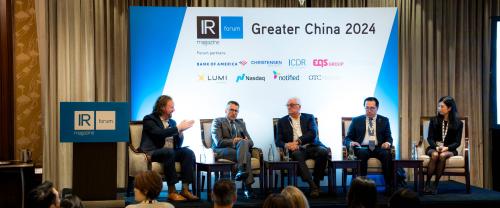Further trends emanating from the introduction of Mifid II are emerging with the regulation contributing to a reduction in trading liquidity and broker research across most areas of the market, according to the latest research.
The impact has seen buy-side firms reducing the amount of external research they consume, leading to cuts in research coverage from the sell side and ultimately a contraction in stock liquidity.
Analysis from London-based research provider Hardman & Co reveals that since the beginning of the year, liquidity levels in the London Stock Exchange main market have fallen by an average of 9.4 percent per company.
This can have a big impact on the role of the IRO, as stocks with low liquidity are more likely to spike on a positive or negative news flow, with the risk that investors trade in and out on a shorter-term basis. Over time, this can lead to a more speculative shareholder base, less likely to be interested in the long-term narrative.
Within the main London market, the study reveals that mid-cap companies have been hit hardest, with an average liquidity retraction of 9.8 percent since December 2017, while an average liquidity fall of 8.4 percent and 9.1 percent has been seen over the same period in large-cap and small-cap stocks respectively.
In the AIM market, liquidity has fallen by an average 3.7 percent per stock since the start of the year. Mid caps were once again the hardest hit with an average contraction of 25.2 percent, while large caps saw liquidity fall by an average of 11 percent.
However, small caps within the AIM market actually saw their liquidity improve by an average of 4.5 percent. In addition, research coverage improved across all three cap sizes, with the average number of analysts per stock increasing 7.4 percent, 1.2 percent and 1.9 percent for small caps, mid caps and large caps respectively.
Small-cap coverage has also improved in the LSE main market, with the average number of analysts per stock increasing by 7.7 percent. However, the trend does not follow to the rest of the market, with the average number of analysts per stock falling by 5 percent and 6.2 percent for large caps and mid caps respectively since the start of the year.
Keith Hiscock, CEO of Hardman & Co, says in a statement that the findings represent ‘a short time period when companies, brokers and fund managers are all still grappling with the new rules’.
He adds: ‘We expect a profound impact from Mifid II over time and the measured impact on larger stock coverage and liquidity seems to reinforce the expected trends so far.
‘But with analysts updating research on many smaller companies just twice a year, it is too early to tell whether smaller-cap stocks will see a permanent reduction in research coverage and contraction of liquidity in their shares.’
The IR Magazine Global Forum & Awards takes place this October in Amsterdam, Netherlands. We have a great agenda lined up, focusing on the hottest global IR topics, including:
- Trade, Tax and Trump: The global economic outlook
- A Practical Guide to Mifid II: Seize the access opportunity
- Passive investing: How technology is changing the dynamics for investors and IR
- A different discussion on crisis management: The internal role of IR in a crisis
View the full agenda, read speaker profiles and book your tickets here.











